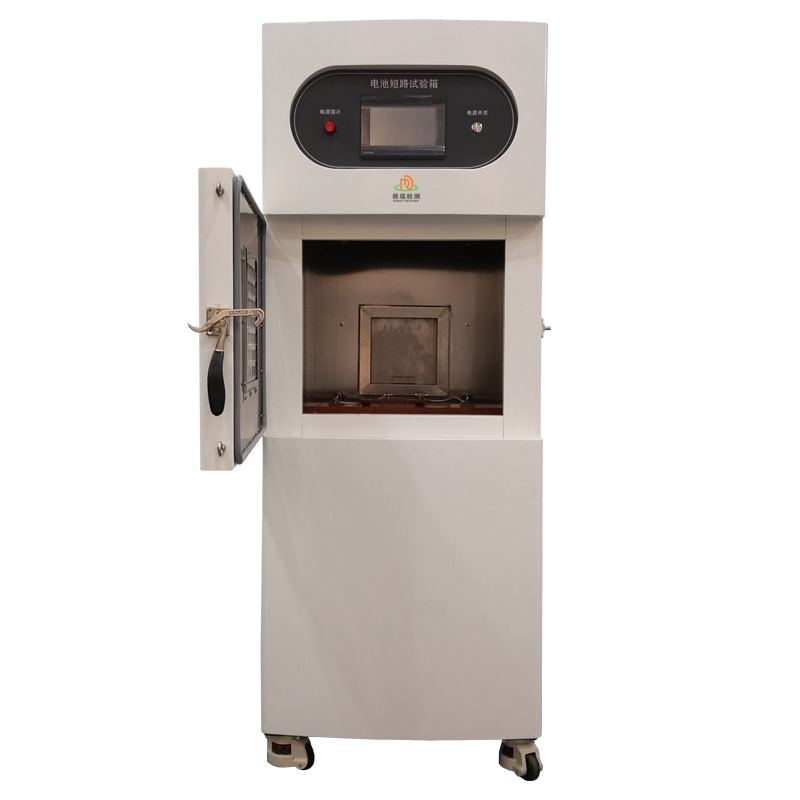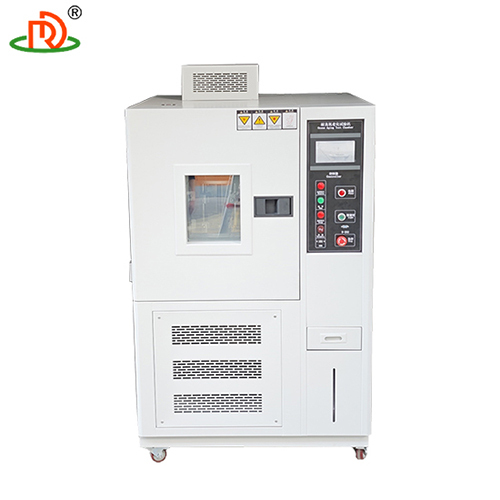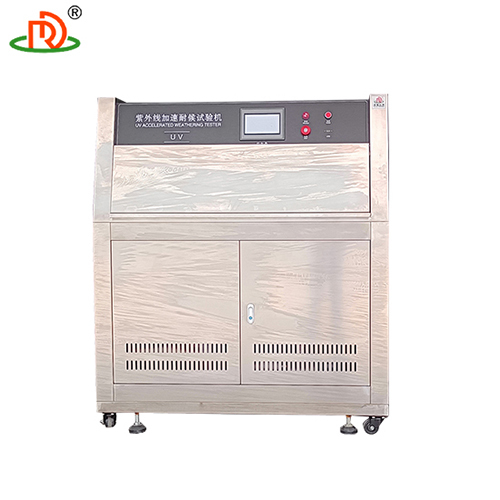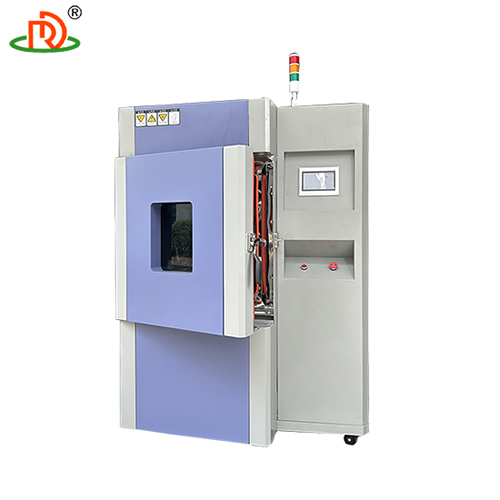
UL1642 certified battery short circuit tester
186005.0 INR/Unit
Product Details:
X
UL1642 certified battery short circuit tester Price And Quantity
- 1 Unit
- 186005.0 INR/Unit
UL1642 certified battery short circuit tester Trade Information
- Cash in Advance (CID)
- 100 Unit Per Month
- 7 Days
- All India
Product Description
UL 1642 is a standard issued by Underwriters Laboratories (UL), specifically for the safety testing requirements of lithium batteries. The standard involves the design, manufacture and use of lithium batteries in the process of safety testing, designed to ensure that the battery in the actual application of fire, explosion or other safety accidents will not occur.
UL 1642 Certified Battery Short Circuit Tester is specially designed to test the safety of lithium batteries under short-circuit conditions, especially for battery testing according to UL 1642 standard. The short circuit test is primarily used to check the behavior of the battery in the event of an internal short circuit, including potential hazards such as overheating, fire or explosion. Below are some key points about UL 1642 certified battery short circuit testers:
1. UL 1642 standard short circuit test requirements
According to UL 1642, batteries need to meet the following requirements in the short circuit test:
Short circuit condition: Test whether the battery can withstand a direct short circuit. Usually the short circuit is set up by connecting conductors at both ends of the battery or shorting an external load to simulate possible short circuit conditions.
Temperature control: During testing, the temperature of the battery needs to be strictly monitored to prevent overheating and fire or explosion. UL 1642 requires that the temperature during short-circuiting should not exceed the specified maximum safe temperature.
Battery Failure Mode: During testing, the battery should pass the test without causing a fire, explosion or leakage. Any non-compliant safety issues indicate that the battery fails to meet the UL 1642 standard.
2. Battery short circuit tester function
UL 1642 certified battery short-circuit testers are designed to simulate the short-circuit conditions that may be encountered by batteries in actual use and to ensure the safety of batteries in such conditions. Typical test equipment needs to have the following features:
Accurate current control: The tester is able to accurately simulate short-circuit conditions and control the short-circuit condition through current limiting and voltage monitoring.
Temperature monitoring: A built-in temperature sensor or infrared thermometer monitors the temperature change of the battery during the short-circuit process to ensure thermal stability during the test.
Over-voltage protection: The tester should have over-voltage protection function to prevent the battery from over-voltage and safety accidents during the testing process.
Real-time data recording and analysis: The tester should be able to record the current, voltage, temperature and other data of the battery in the short-circuit state in real time and analyze them. These data will be used to verify whether the battery meets the safety requirements of UL 1642.
Emergency power-off function: In order to ensure the safety of the testing process, the tester should be equipped with an emergency power-off device. If there is overheating, fire and other dangers, it can cut off the power supply in time to prevent accidents.
3. Key steps in the testing process
Preparation: Ensure that the battery is in the test state, connect the appropriate load or short-circuit wire. After the equipment is set up, conduct a preliminary check.
Short-circuit test: Activate the short-circuit state using a short-circuit tester and record the current, voltage and temperature changes of the battery in this state.
Safety Monitoring: Real-time monitoring through temperature monitoring, smoke detection, etc. ensures that the battery has not overheated, caught fire or exploded unexpectedly during the test.
End of Test: After the test is completed, evaluate whether the battery meets the requirements of UL 1642. If there is no danger of overheating, fire or explosion, the battery has passed the UL 1642 short circuit test.
4. The importance of UL 1642 certification
Lithium batteries certified by UL 1642 prove that they can maintain a high level of safety under various application environments, especially when exposed to extreme conditions such as short circuit. This kind of certification is crucial to ensure the market competitiveness of battery products and compliance with safety regulations. UL 1642 standard is recognized by many countries and regions around the world as a safety standard for lithium batteries, therefore, batteries with this certification are more likely to pass the rigorous inspection and audit of the market.
5. Selection of Battery Short Circuit Tester
When selecting a UL 1642 certified battery short circuit tester, you need to consider the following key factors:
Test range: Ensure that the tester supports short-circuit testing of different types of lithium batteries (e.g. cylindrical, square, flexible pack, etc.).
Temperature control and monitoring accuracy: The test instrument should have a highly accurate temperature monitoring and control system to prevent overheating.
Data recording and analysis capability: The instrument should be able to record test data in real time and provide detailed analysis reports to help manufacturers understand the performance of batteries under extreme conditions.
Safety: Choose a testing instrument with perfect safety protection functions, such as short circuit protection and over-temperature protection, to ensure the safety of testers and equipment.
| Model | DR-D201 |
| Inner box size | 500x500x500mm (width x depth x height); |
| Equipment dimensions | 700x800x1530mm (width x depth x height); |
| Internal material | SUS201 stainless steel plate, thickness 1.2mm, with Teflon affixed; |
| External material | 1.5mm thick cold-rolled steel plate with paint treatment; |
| Observation window | The size is 250x250mm two-layer tempered glass, the transparent window is equipped with stainless steel mesh; |
| Smoke outlet | 100mm in diameter, located at the back of the box; |
| Pressure relief port | The size of the opening is 200x200mm, located on the back side of the box. When the sample explodes, the pressure relief port will pop open to relieve the pressure; |
| Box door | The single door opens to the left, the box door is equipped with a safety limit switch, and the side is equipped with an explosion-proof chain. The device can be operated only when the box door is closed to ensure the safety of personnel; |
| Test hole | There are 2 test holes with a diameter of 50mm on the left side of the device, which are convenient for putting in the collection lines of temperature, voltage, current, etc.; |
| Lighting device | It is convenient to observe the state of the tested sample; |
| Temperature collection range | RT-1000; |
| Temperature acquisition channel | 1 channel; |
| Temperature display accuracy | 0.5; |
| Voltage acquisition range | 0-100V; |
| Voltage acquisition channel | 1 channel; |
| Voltage display accuracy | 0.5%; |
| Maximum short-circuit current | 1000A; |
| Current acquisition channel | 1 channel; |
| Current display accuracy | 0.5%; |
| The internal resistance of the device loop | 8020m; |
| Equipment movement | There are four universal casters at the bottom of the equipment, which can be moved freely; |
| Control method | PLC touch screen control; |
| Equipment weight | 85Kg |
| Power supply | AC220V;50Hz/60Hz |
UL1642 is the Underwriters Laboratories safety standard for lithium-ion batteries.UL1642 Certified Battery Short Circuit Tester is a device used to test the safety performance of lithium-ion batteries in the event of a short circuit. The following are the general steps for using this tester:
1. Preparation
Make sure the tester is properly installed and grounded.
Check that the tester's power cord and ground wire are intact.
Verify that the tester's software and firmware have been updated to the latest version.
Prepare the lithium-ion battery to be tested and make sure it meets the test requirements.
2. Setting test parameters
According to UL1642 standard, set the tester's short-circuit current, short-circuit time and other parameters.
Make sure the test parameters are set correctly to avoid battery accidents during the test.
3. Connect the battery
Connect the lithium-ion battery to be tested to the test fixture of the tester correctly.
Ensure that the positive and negative terminals of the battery are correctly connected to the corresponding polarity of the test fixture.
4. Starting the test
Start the tester and begin the short circuit test.
During the testing process, observe the changes in temperature, voltage and other parameters of the battery.
Record the test data for subsequent analysis.
5. End test
After the test, turn off the tester and disconnect the battery.
Analyze the test data and evaluate the safety performance of the battery under short-circuit conditions.
6. Precautions
During the test, the operator should wear protective equipment, such as protective glasses and gloves.
Good ventilation should be maintained during the test to avoid fire caused by overheating of the battery.
After the test, the battery should be placed in a safe area and left to cool down before disposal.
Tell us about your requirement

Price:
Quantity
Select Unit
- 50
- 100
- 200
- 250
- 500
- 1000+
Additional detail
Mobile number
Email








 English
English Spanish
Spanish French
French German
German Italian
Italian Chinese (Simplified)
Chinese (Simplified) Japanese
Japanese Korean
Korean Arabic
Arabic Portuguese
Portuguese